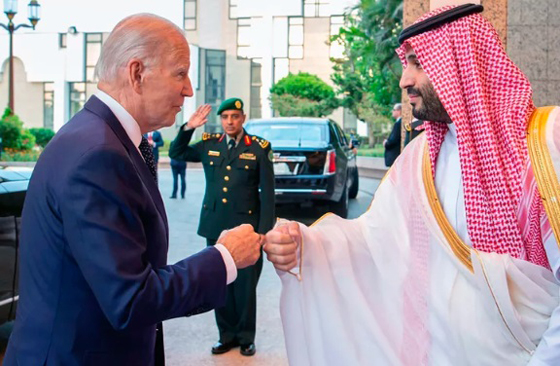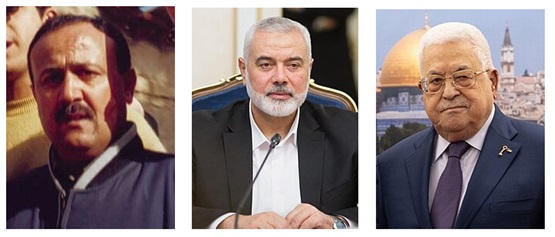In just two years, China has facilitated a breakthrough deal between Saudi Arabia and Iran; and Fatah and Hamas. Over time, that could pave the way to peace in the Middle East, after decades of unwarranted violence – including the assassination of Hamas leader Ismail Haniyeh.
On July 23, 14 Palestinian factions including rivals Hamas and Fatah agreed to end their divisions and form an interim national unity government, thanks to Beijing’s intermediation (Figure 1).
After a breakthrough deal between Saudi Arabia and Iran, it is China’s second major contribution to peace in the Middle East. In the past, Egypt and other Arab countries have tried but failed to reconcile the two leading factions.
The Beijing meeting took place in tandem with efforts by international mediators to achieve a ceasefire deal in Israel’s Gaza War, in which nearly 40,000 Palestinians have been killed and some 2 million people displaced, with the International Criminal Court considering charging Israeli leaders for genocide. And United States cannot avoid complicity in this catastrophe, due to continued massive American military aid and financing, which has made it possible.
Thanks to the Beijing Declaration, Palestinians are now in a position to heal and unify their ranks, if the national unity government prevails. That is seen as a threat by the Netanyahu war cabinet, which is perhaps one reason why the political leader of Hamas Ismail Haniyeh was assassinated just days after the Beijing agreement.
Figure 1: Beijing Declaration: Palestinian Factions

Source: CCTV/YouTube
Fatah and Hamas
The 1993-1995 Oslo Accords detached the Palestinians in the occupied territories from the Palestinian Liberation Organization (PLO), which is seen as the true representative of Palestinian people, and the Palestinians in exile by creating a Palestinian Authority (PA) for the territories. As the PA replaced the PLO as the prime Palestinian political institution, PLO factions that opposed the Oslo process were marginalized.
In the following decade, Israel’s Prime Minister Benjamin Netanyahu used repression against PA, while allowing Hamas to operate and receive hundreds of millions of dollars, particularly via Qatar. His goal remains rule-and-divide: Using Hamas to weaken PA and then PA to weaken Hamas, and the US to weaken both.
The first broad Palestinian election took place in 2006. The results reflected the new facts on the ground. Under the name “Change and Reform,” Hamas won the majority capturing over 44 percent of the vote as opposed to 41 percent by the ruling Fatah.
As expected, Hamas predominated in Gaza, except for Rafah. But now it also controlled much of the West Bank, except for Tulkarm, Jenin and Betlehem. Beset with internal strife, the PLO was widely perceived as compromised in the occupied territories, while its more popular figures, such as Marwan Barghouti, were jailed by the Israelis. Many EU leaders, opposition figures and peace movement leaders, including my late friend Amos Oz, saw Barghouti as viable negotiating partner.
Palestinians and the West
To undermine the outcome of the 2006 democratic election, the US started plotting to overthrow Hamas after its election victory, while Israel launched a series of raids into Gaza and the West Bank, hammering the civilian infrastructure and detaining dozens of high-level Hamas officials and supporters. Since then, no new elections have been held.
Following the crackdown of Hamas’s leadership, Israel and the Middle East Quartet – the U.S., Russia, UN, and EU – introduced economic sanctions against the Palestinian Authority, Hamas’s parliamentarians and Palestinian territories.
As the Haniyeh government was sworn in Gaza, both the U.S. and EU cut aid to the Palestinian Authority. Israel withheld $475 million of Palestinian tax and customs revenue; half of PA’s monthly income in 2005. Hence, the falling incomes, increased poverty, institutional collapse and economic decline. Meanwhile, the friction between Fatah and Hamas burst into an open military conflict in June 2007.
The mantra was that Hamas would never accept Israel’s existence. But that was hogwash. Several Hamas leaders have signaled support for peace prospects. As Efraim Halevy, the pragmatic ex-head of Mossad, argued, those who were seeking peace in the Middle East should seize “the opportunity of a seriously weakened Hamas to reflect on how we might bring it into the political process instead of just confronting it with tanks in the back alleys of Gaza.”
The stage for tragedies was set when Israel and the U.S. imposed a ground, air, and maritime blockade, basically to strangle Gaza. For all practical purposes, it was successful causing massive economic devastation thereby setting the stage for October 7, 2023.
New “grand bargain” but old dominoes
For two years, the Biden administration has been in talks with Saudi leaders urging Riyadh to establish diplomatic ties with Israel. Saudi Arabia has joined the BRICS alliance, remains one of China’s largest oil suppliers and is selling oil in multiple currencies. But it is also the world’s second-largest arms importer and 75 percent of those weapons come from the U.S.
Riyadh has been negotiating a security pact with the U.S., modeled loosely on the US-Japan mutual defense pact, while seeking cooperation in a civilian nuclear program. Preceded by Israel’s peace treaties with Egypt (1979) and Jordan (1994) and the Oslo Accords with the PA (1993-95), the grand bargain is predicated on the Abraham Accords (2020-2021) between Israel and the UAE and Bahrain, and subsequently with Morocco and Sudan, respectively.
However, after October 7, the Palestinians can no longer be sidelined in the name of “normalization,” which is what the Netanyahu cabinet would prefer. To the US, the Gaza genocide is a distraction. The real goal of the grand bargain is to sideline China in the Middle East. Like once in Southeast Asia and two decades ago with Iraq, the White House sees every region as a pack of dominoes. Take over the biggest and the rest will fall in line. In each case, that fallacy has resulted in a catastrophe.
Worse, U.S. administration wants to exploit the Saudi deal to undermine the prospects of peace and development in the Middle East. It seeks to limit Riyadh’s cooperation with Beijing on trade, technology and military matters, insisting that the Saudis would trade oil in dollars rather than in local currencies, such as the Chinese yuan. The White House also wants to disrupt Israel’s technology trade with Beijing and Chinese investment in Israel.
Figure 2: Grand Bargain and Old Dominoes

President Joe Biden and Saudi Crown Prince. Source: Wikimedia Commons.
Palestinian unity at the West’s shadow
Despite the calls by Israel and the West for a “reformed PLO leadership,” most Palestinians in both Gaza and the West Bank continue to support the Hamas offensive, even at the risk of their lives.
Make no mistake: Their first choice is peace. But in light of Israel’s obliteration war in Gaza and its de facto effort to annex the West Bank, they believe that only armed struggle can save them from ethnic expulsions, which some members of the Netanyahu cabinet and its Messianic far-right pledge almost daily.
In a hypothetical presidential competition between Barghouti and Mahmoud Abbas from Fatah, and Hamas’s political leader Ismael Haniyeh. As recent Palestinian polls suggest, Palestinians support the Fatah’s jailed Barghouti (40%), by a wide margin, against Hamas’s Ismail Haniyeh (23%), while the Fatah’s ailing 90-year-old Abbas (8%) is seen as compromised. By contrast, the U.S. administration and the Netanyahu cabinet prefer less independent pro-West PA leaders who are more “malleable,” sort of Juan Guaidós with Palestinian characteristics.
Figure 3: Some Key Actors

(From left to right) Marwan Barghouti, Ismail Haniyeh, and Mahmoud Abbas. Source: Wikimedia.
Barghouti is imprisoned. The 90-year-old Abbas is on his way out. Hence, perhaps Israel’s assassination of Haniyeh. His death is a severe blow to any attempt to release the remaining hostages. By killing the pragmatic political leader of Hamas, the Netanyahu cabinet also made any prospect of ceasefire in Gaza far more difficult. Since the Haniyeh assassination took place in Iran, it is paving the way to regional escalation, once again since the April airstrike on the Iranian embassy complex in Damascus, Syria. And as this killing took place amid the inauguration of Iran’s new President, Masoud Pezeshkian, it seems intent to undermine Iran’s peaceful development – a prospect that the Netanyahu cabinet has long shared with Washington’s neoconservatives.
In the foreseeable future, a Palestinian national unity government is critical. After the obliteration of Gaza, it must pick up the pieces from the ruble and ruin, manage the affairs of Palestinians in Gaza and the West Bank, oversee reconstruction and prepare conditions for elections.
But can the Fatah-Hamas deal prevail? Skeptics expected the West to kill any effort at a national unity government, as it has done since the onset of the peace process in the 1990s. After the Haniyeh assassination, they are saying: “I told you so.” But the reverse is also possible. The killing of Haniyeh could unify Palestinian factions and Palestinian people in an unanticipated way.
From violent destabilization to peace and development
Since 1945, Washington has relied on a dark record of regime change and destabilization in the Middle East. Since then, its efforts at external interventions cover almost every country in the region. The results have been disastrous, from the post-9/11 wars that cost over $8 trillion and the lives of more than 1 million people, all the way to the Gaza War in which the U.S. is complicit to genocidal atrocities, due to its massive military aid and financing.
By contrast, China’s approach builds on peace, stability and development, as reflected by the breakthrough peace deal it brokered between longstanding regional rivals Saudi Arabia and Iran last year. The successful intermediation between Fatah and Hamas is another example of the Chinese approach.
In recent months Chinese officials have ramped up advocacy for the Palestinians in international forums, calling for a larger-scale Israeli-Palestinian peace conference and a timetable to implement a two-state solution.
The alternative is lethal: regional escalation of Israel’s obliteration war from Gaza and the West Bank to Hezbollah in southern Lebanon, or a fatal confrontation with Iran. It is these dark objectives that loom behind the Haniyeh assassination.
This is an updated version of the original commentary preleased by China-US Focus on July 31, 2024.
Dr. Dan Steinbock is the founder of Difference Group and has served at the India, China and America Institute (US), Shanghai Institute for International Studies (China) and the EU Center (Singapore).
Dr Steinbock’s new book, The Fall of Israel (fall 2024) is a comprehensive look beyond the Gaza War, at the Jewish settlements and occupied territories, the transformation of Israel, Palestine, and the repercussions in the Middle East and beyond.


